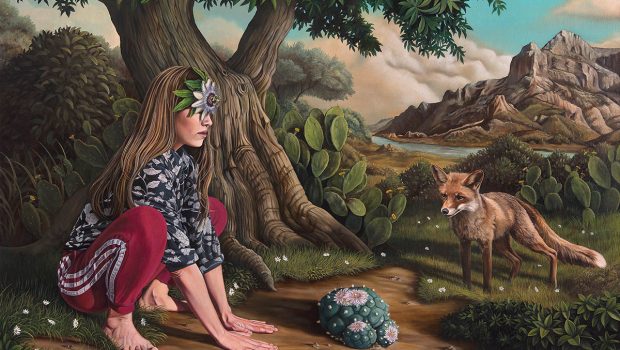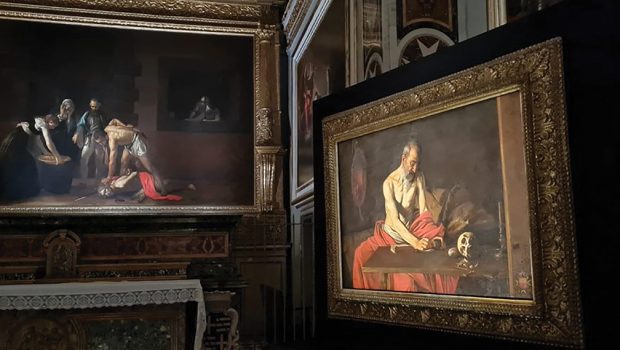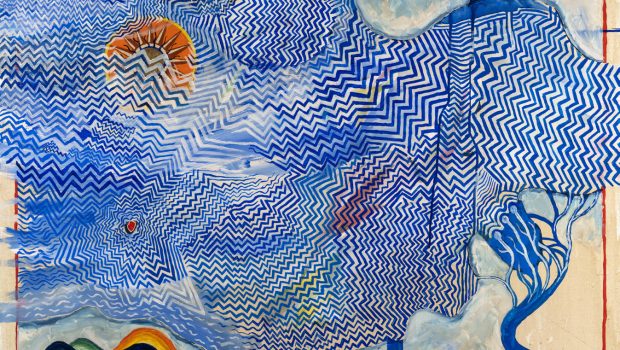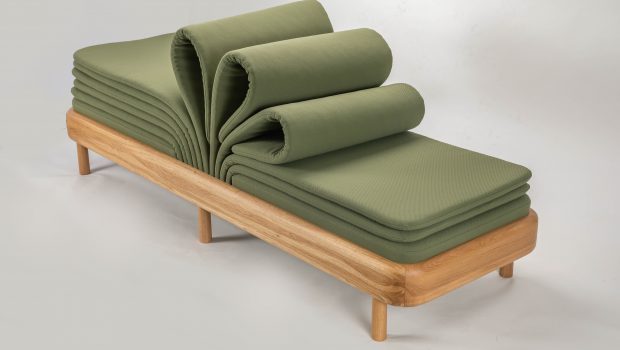Where She Lays Her Head
Ritty Tacsum is currently presenting an intimate and personal body of work: photography focusing on the sea (represented through the element of water), and the bed (representing the intimacy of interior spaces). To find out more about her work process and her way of thinking, we put some questions to Ritty (RT) and her curator and long-time collaborator, Lisa Gwen Baldacchino (LGB).

In the past, you’ve used quite intricate manipulation of photographs, repeating or mirroring architectural images and creating imaginary landscapes. Your current work, however, seems to focus more on the human body; can you explain a bit about this development in your work?
RT: I think development in one’s work is quite a natural process. Even though I still create architectural work which is highly manipulated, my primary focus has shifted towards the human body. There’s a certain element of rawness which has held my interest for a couple of years now. I love the dynamics of working with people, especially in the past few months, so much so that the number of people I work with on any one shoot has become more ambitious. Before, it was just the model and myself, but in the last couple of months I’ve had up to nine models working together.
LGB: Actually, I’d say that Ritty is returning to the human body. In her first exhibition, her work was all about the body, or rather the imagined bodies of her humanoids. What is markedly different is that she no longer feels the need to mask, to give them an alternative persona or semblance. Her figures are no longer anthropomorphic. Instead she captures them as they are, in their bare nakedness.
There are layers of meaning in your work: vulnerability, peace, even some humour. At the same time, your new images create scenes that not only impart meaning but are also quite enigmatic and difficult to unpack. Is this ambiguity important to your new body of work, and was it important to your work before?
RT: The element of ambiguity has always been important in the work I create, be it for my architectural or figurative work. I think it is the way I am wired: I enjoy challenging myself, as well as the viewers. I believe it is also a representation of who I am as a person.
LGB: There has always been a degree of ambiguity in Ritty’s work – from her very first exhibition in 2011. I think that, back then, it was more overt and now it’s become more subtle. In fact, her first images were labelled surreal – also because her dreams were literally a point of departure for her compositions, for each of the photoshoots she orchestrated. Her current body of work has less of that orchestrated or staged ambiguity and more of an autobiographic element.
Can you tell us a bit more about your work process: how do you start to put an image together, what are your thoughts during this development and how much do you feel you need to stay in control of the final image?
RT: I always have an idea in my mind of what the final image will look like, but the beauty of an unknown location, the weather and the dynamic between me and the model(s) always influence the overall aesthetic of the final image. Sometimes the result is wonderful, other times I just discard the photos after the shoot and call it a day.
The colour palette of this exhibition is beautiful: quite subdued and almost reticent. How important were these colours to the atmosphere you built in the images?
RT: The choice of colours for my images has been quite consistent in the last couple of years, primarily because I feel it enhances the mood I want to portray in my images. The colour palette for me is essential as it unites the mood and feeling into a holistic whole.
LGB: Ritty’s choice of colour palette was previously sporadic, spread across works created over a span of time. Now this deep greyish blue-green tone has almost become her signature – and one which characterises and almost defines her entire body of work. It is not unlike the colour of the tempestuous sea: it is almost impenetrable. In its density, it stops being cold and almost achieves an uncanny sense of warmth, which is juxtaposed by her alabaster white bodies.
The idea of the bed as a refuge is a beautiful one: quite calming and comforting. It’s also a very personal sentiment. Do you see your work as autobiographical and how much of yourself do you expose in your work?
RT: In my first exhibition, back in 2011, I put a bed next to the works on display (an unconscious reference to Tracey Emin). At the time, the bed had a significant meaning for me… I was going through a difficult patch and I spent most of my time in it, creating works in my own bedroom. Nowadays, the bed has different meanings to me: pain, love, joy – it is one of the only places where I find myself, over and over again.
And, yes, to some extent my work is autobiographical: some images are a clear depiction of an experience while others are simply a thought or a fantasy.
LGB: Having worked with Ritty since her very first exhibition in 2011, I have never stopped studying and following her work. I couldn’t help reading the patterns which emerged organically. And that is how this exhibition was born: understanding the patterns related to the sea, to water and to intimate, confined spaces such as her bed. And, yes, the work is autobiographical – whether it taps into reality or fantasy is another matter, but it is a reflection of the self, even though she may not always be aware of it.
Do you think the relationship to the sea as a place of refuge and solace is intrinsic to a Maltese landscape, or do you think of it as a more universal theme?
RT: Growing up on an island, it is impossible not to build a strong relationship with the sea. The sea has always had a great meaning in my life, and I feel it represents the duality in myself – at times calm, and at times rough, with no in-betweens. Where I Lay Down is on show at the Palazzo de la Salle, Republic Street, Valletta until 28 Mar








